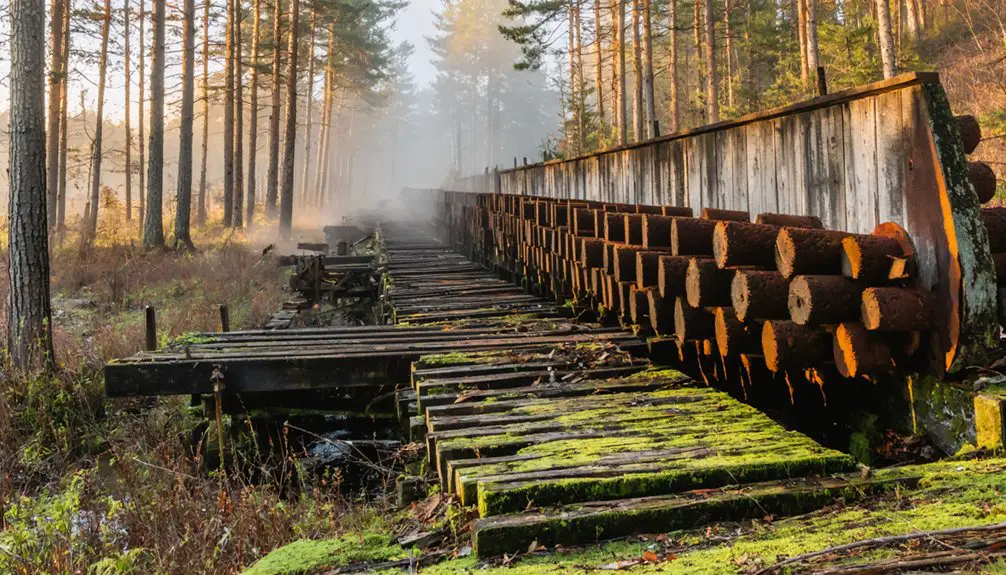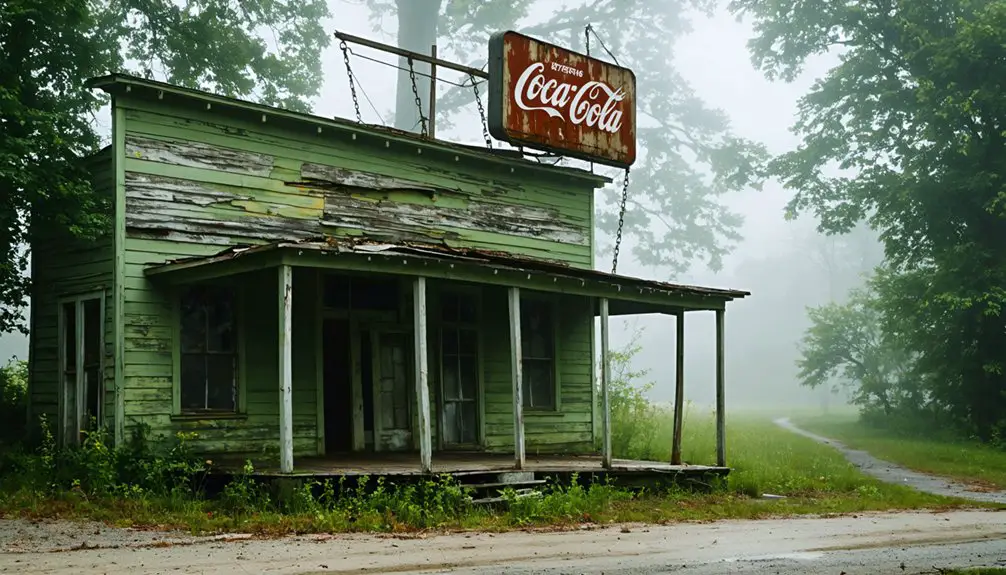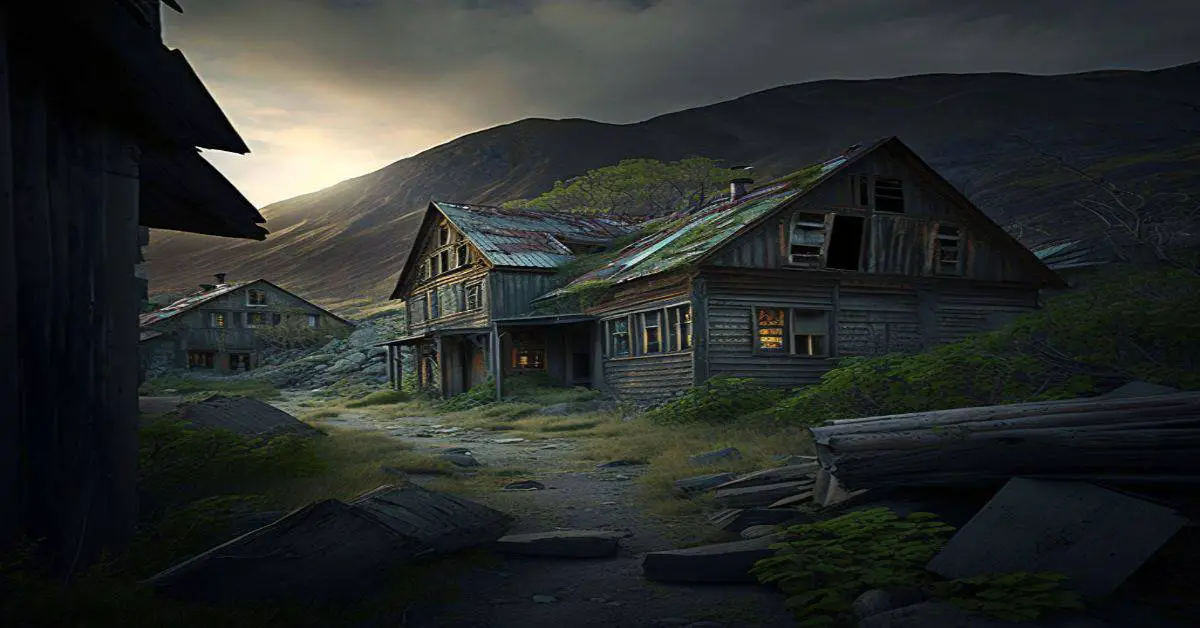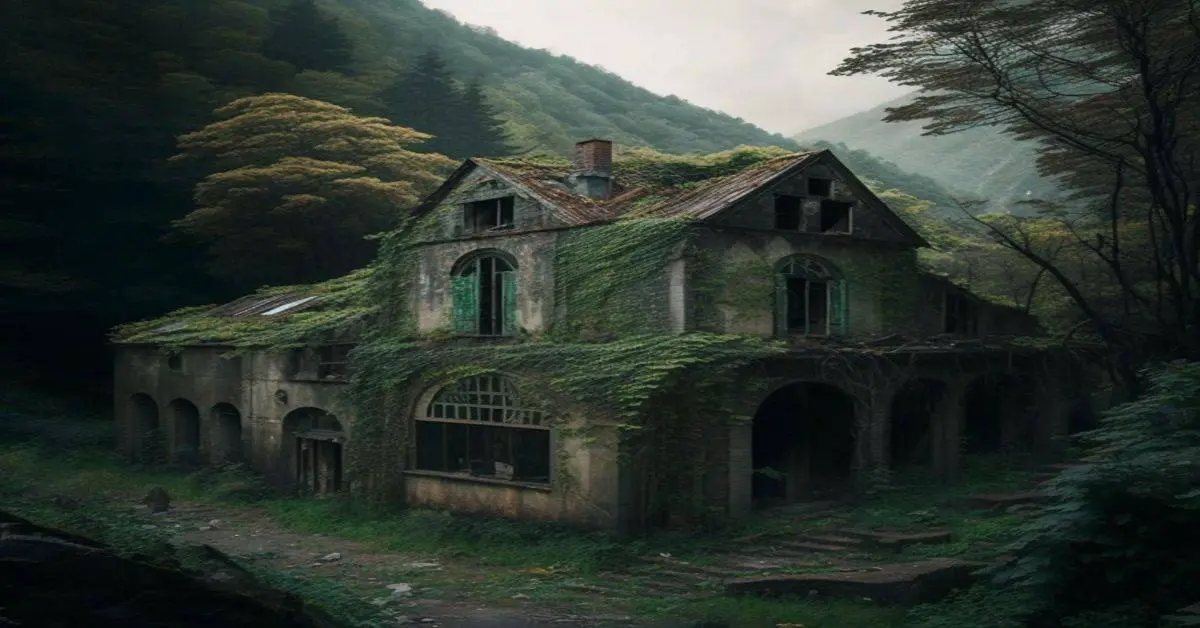You’ll find Watervale’s story begins in 1892 as a bustling lumber town established by the Leo Hale Lumber Company. After the company’s bankruptcy in 1893, the town fell into abandonment until Dr. Oscar Kraft purchased it in 1917, transforming the ghost town into a thriving resort destination. Today, you can explore 16 preserved Victorian-era buildings within a 255-acre historic district, where four generations of family stewardship have maintained this unique slice of Michigan’s lumber heritage.
Key Takeaways
- Watervale transformed from an abandoned ghost town in 1893 after the Leo Hale Lumber Company’s bankruptcy into a thriving resort destination.
- Dr. Oscar Kraft purchased the deserted town in 1917, restoring historic structures and converting them into a family resort.
- The town’s original Victorian-era buildings, including the Inn and boarding house, were preserved rather than demolished after its abandonment.
- Sixteen historic structures within a 255-acre district survive from Watervale’s lumber town era, maintaining their architectural integrity.
- The town’s ghost town period lasted from 1893 to 1917, with unemployment exceeding 25% and widespread infrastructure decay.
From Lumber to Legacy: The Birth of Watervale
While Michigan’s lumber boom was transforming the state’s landscape in the late 19th century, the Leo Hale Lumber Company established Watervale in 1892 as a bustling mill town.
You’ll find the town was strategically positioned to take advantage of both water and rail transport, with a dedicated railroad connecting Upper Herring to Lake Michigan’s pier system.
The lumber industry shaped every aspect of Watervale’s early community development. The town stood abandoned and deteriorated for over 25 years until its revival. Ice-coated roads enabled efficient winter transport of logs throughout the region.
From mill operations to housing and social life, lumber was the foundation that built Watervale’s early identity.
Steam-powered sawmills drove production while narrow gauge railways efficiently moved timber through the town.
Workers found homes in cottages, and community life centered around the boarding house, post office, and schoolmaster’s residence.
The town’s prosperity proved short-lived, though – when the Panic of 1893 bankrupted Leo Hale Lumber Company, Watervale’s original purpose faded until Dr. Oscar Kraft’s 1917 restoration breathed new life into the settlement.
The Economic Collapse and Ghost Town Years
After the Leo Hale Lumber Company’s bankruptcy in 1893, Watervale experienced a devastating economic collapse that would transform this once-bustling mill town into a ghost town.
The economic impact rippled through the community as Michigan’s recurring recessions intensified local hardships. The severe oil crisis and stagflation of 1973-75 only worsened the town’s long economic decline. Property values crashed similarly to how lead contamination devastated Flint’s housing market decades later. You’d have witnessed a dramatic population shift as residents fled in search of work, leaving behind crumbling infrastructure and declining municipal oversight.
- Local unemployment soared above 25% during the Great Depression, devastating the labor market.
- Housing values plummeted while infrastructure decay accelerated due to deferred maintenance.
- Public health concerns emerged as resource management faltered under financial strain.
- Community resilience wavered as young workers departed, leaving an aging population.
Despite periodic attempts at economic recovery, Watervale’s ghost town status deepened as businesses shuttered and public services dwindled.
A Doctor’s Vision: The Resort Transformation
You’ll find that Dr. Oscar Kraft’s 1917 purchase of the abandoned logging town marked a pivotal transformation in Watervale’s history.
Despite facing dilapidated buildings and a site that had stood empty for over 25 years, Dr. Kraft recognized the location’s inherent potential as a family resort destination.
Through careful restoration of original structures like the Inn, Casino, and boarding house, while adding new buildings such as the Barbara cottage from Sears & Roebuck kits, Dr. Kraft preserved the site’s historic character while adapting it for tourism.
The resort property now offers fourteen unique cottages for visitors to experience the historic charm firsthand.
The development required careful navigation and clarity to ensure visitors could locate and access the various new resort facilities.
Kraft’s Historic Property Purchase
In 1917, Chicago ophthalmologist Dr. Oscar Kraft made a historic purchase that would transform an abandoned Michigan lumber town into a cherished family retreat.
You’ll find Watervale’s roots dating back to 1892 when the Leo Hale Lumber Company established the town, only to see it deserted after the Panic of 1893.
The abandoned town’s key features included:
- Original boarding house and post office from lumber era
- Schoolmaster’s house and historic Inn
- Casino building and eight original cottages
- One mile of pristine shoreline on Lake Michigan and Lower Herring Lake
Kraft’s purchase marked the beginning of a new chapter for Watervale, as he acquired the entire ghost town after it had sat empty for over 25 years.
His vision wasn’t commercial development, but rather a summer haven for his seven siblings. Like the famous The Round Barn Theater in Nappanee, Indiana, Watervale’s historic buildings were preserved and repurposed for future generations to enjoy.
Resort’s Architectural Evolution
When Dr. Oscar Kraft purchased Watervale in 1917, he transformed the abandoned lumber camp into a thriving family resort while preserving its authentic architectural styles.
You’ll find his vision realized in the careful restoration of original structures, including the boarding house, post office, and schoolmaster’s house, all adapted to serve resort guests.
The structural adaptations balanced preservation with comfort, as you’ll discover in the relocated “Strawberry Box” building and the Sears & Roebuck kit-built Barbara cottage.
The addition of the Bluff cottage, featuring its distinctive 52-step staircase, enhanced the resort’s charm.
While industrial elements like railway tracks disappeared, Kraft maintained the historic windmill and integrated new recreational facilities.
This thoughtful development earned Watervale recognition as a Michigan State Historic Site and National Register listing.
After discovering the property’s sagging buildings and lakes, Kraft was inspired to create a welcoming retreat for family and friends.
Today, guests can enjoy miles of beaches while experiencing the historic charm of this former logging town.
Historic Buildings and Architectural Heritage
You’ll find Watervale’s heritage beautifully preserved in its 16 original buildings constructed between 1892 and 1927, including the former lumber town’s general store, boarding house, and Victorian-style clapboard homes.
The transformation into a resort preserved key structures like the historic windmill and eight original cottages, while adding unique features such as “the Strawberry Box” and a Sears & Roebuck kit home known as “the Barbara.”
Through four generations of continuous family ownership, these buildings have maintained their architectural integrity while adapting to modern hospitality needs, featuring authentic elements like wooden clapboard siding and traditional Victorian designs. Visitors can explore these historic structures during self-guided tours with knowledgeable hosts stationed at each location.
Original Mill Town Buildings
The historic buildings of Watervale stand as a tribute to Michigan’s lumber era, with sixteen original structures dating from 1892 to 1927 still gracing Watervale Road.
This mill town’s architectural significance is preserved through its authentic buildings, which served as the backbone of a thriving lumber operation.
You’ll discover a rich tapestry of Victorian-influenced structures that once powered this bustling community:
- The former general store and boarding house, now transformed into an inviting inn
- Workers’ cottages featuring classic clapboard siding and practical designs
- The post office and schoolmaster’s house, essential to community life
- Functional structures that supported lumber operations, including the historic pier location
These one- and two-story buildings showcase the practical yet charming construction methods of late 19th-century industrial communities.
Resort Conversion Architecture
In 1917, Watervale’s mill town buildings found new life as a resort destination, marking the beginning of an innovative architectural transformation that continues to this day.
The adaptive reuse of the original structures – including the boarding house, schoolmaster’s house, and worker cottages – preserved the town’s authentic character while creating comfortable guest accommodations.
You’ll find the resort’s architectural integrity carefully maintained through thoughtful renovations that blend historic and modern elements.
Original frame construction, wood siding, and period-appropriate porches remain intact, while interior updates provide modern comforts.
Even new additions like the Bluff cottage complement the historic aesthetic.
The buildings still face Lake Michigan and Lower Herring Lake, just as they did in their lumber town days, while the property’s original layout continues to shape guest experiences.
Preservation of Historic Structures
Since 1917, dedicated preservation efforts have protected Watervale’s remarkable collection of 16 Victorian-era buildings, spanning construction from 1892 to 1927.
The historic restoration began when Dr. Oscar Kraft undertook the ambitious project of reviving the abandoned lumber town’s architectural heritage.
Today, you’ll find the district’s 255 acres encompassing authentic structures that maintain their architectural integrity through four generations of family stewardship.
Key preserved structures include:
- The original boarding house and post office, showcasing late 19th-century lumber town architecture
- The Inn and Casino, forming the heart of the restored historical core
- Eight original cottages, including the Barbara cottage built from a Sears & Roebuck kit
- Historic utility buildings like the windmill, ice house, and outhouses that reflect the town’s self-sufficient past
Natural Treasures of the Twin Lakes Region
Located along Michigan’s rugged Copper Country, Twin Lakes State Park anchors a remarkable collection of interconnected waterways and pristine natural habitats.
Nestled in Michigan’s historic Copper Country, Twin Lakes State Park showcases nature’s finest network of unspoiled lakes and wilderness.
You’ll discover five distinct lakes, each offering unique ecological diversity: Sandy Lake with its essential lily pad beds, Clear Lake’s pristine waters where loons dive freely, secluded Horseshoe Lake, Emily Lake’s untamed wetlands, and Pike Lake’s tranquil swamp forests.
The park’s mixed hardwood forests of oak and maple create perfect conditions for wildlife viewing along the 1.5-mile Twin Lakes Nature Trail.
You can explore these natural habitats by foot, boat, or even ORV on designated routes.
The surrounding wetlands support a rich variety of waterfowl and amphibians, while the mature forests provide shelter for diverse bird species and small mammals.
Preserving Michigan’s Logging Era Heritage

Michigan’s remarkable logging heritage stands as a tribute to an era when the state dominated America’s lumber production, transforming both its landscape and economy from 1869 to 1900.
You’ll discover this rich history preserved through various sites and collections that showcase the industry’s profound impact on the region.
- Historic logging camps and mill remnants offer you glimpses into the rugged life of lumberjacks and their innovative logging techniques.
- The Huron-Manistee National Forests maintain heritage sites where you can explore how winter logging operations used horse teams and river systems.
- Photographic collections, like Thomas G. Sullivan’s work, document the environmental impacts of logging on Michigan’s vast white pine forests.
- State archives preserve oral histories and documents that tell the story of how logging shaped Michigan’s development, from the Saginaw Valley to Manistee.
Four Generations of Family Stewardship
When Dr. Oscar H. Kraft purchased Watervale in 1917, you’d never guess his family’s stewardship legacy would span four generations and counting.
After transforming the abandoned logging town into a vacation destination, Kraft established family traditions that continue to shape this historic resort.
You’ll find his vision carried forward by his niece Vera Noble and her husband Vernon, who took over operations in 1960.
Following Vera’s passing in 2005, her three children maintained the family’s commitment to preservation.
Through restoration of original structures and careful adaptations, the Kraft/Noble family has protected Watervale’s authentic character while welcoming modern guests.
Their dedication earned the resort recognition on both Michigan’s State Historic Site list and the National Register of Historic Places, ensuring this piece of logging-era heritage endures.
Frequently Asked Questions
What Happened to the Original Residents After the Town’s Economic Collapse?
You’ll find the residents’ migration followed their economic survival instincts, with families forced to scatter toward nearby towns and larger Michigan cities offering employment after their livelihoods suddenly vanished.
Are Any Descendants of the Original Logging Families Still Living Nearby?
You won’t find any original logging family descendants in the area today – their family legacy faded as transient workers dispersed after the 1893 bankruptcy, leaving only restored buildings to tell their heritage.
How Much Did Dr. Kraft Pay for the Abandoned Town?
You won’t find records of what Dr. Kraft paid for the abandoned property in 1917. While the historical value is well-documented, the actual purchase price remains a mystery in Watervale’s legacy.
What Were the Daily Wages for Workers in the Lumber Mill?
Sharp as a saw blade, your historic lumber industry wages would’ve ranged from roughly $1.15 to $2.08 per day, based on monthly pay rates of $30-$50 during Michigan’s 19th century lumber era.
Did Any Other Companies Attempt to Purchase Watervale Before Dr. Kraft?
You won’t find any failed negotiations or competing interests in historical records. After Leo Hale’s lumber company went bankrupt in 1893, no other companies attempted to purchase the land before Dr. Kraft.
References
- https://watervaleinn.com/history/
- https://en.wikipedia.org/wiki/Watervale
- https://lostinmichigan.net/the-ghost-town-of-waterville/
- https://kids.kiddle.co/List_of_ghost_towns_in_Michigan
- https://www.recordpatriot.com/local-news/article/Watervale-Inn-celebrates-100-years-14313580.php
- https://msaf.forest.mtu.edu/ForestInfo/MSUElibrary/LumberingInMichigan.PDF
- http://www.michigan-history.org/lumbering/LumberingBriefHistory.html
- https://www.srs.fs.usda.gov/pubs/gtr/gtr_srs133.pdf
- https://en.wikipedia.org/wiki/History_of_the_lumber_industry_in_the_United_States
- https://www.dbusiness.com/business-features/the-5-greatest-economic-downturns-in-michigan/


